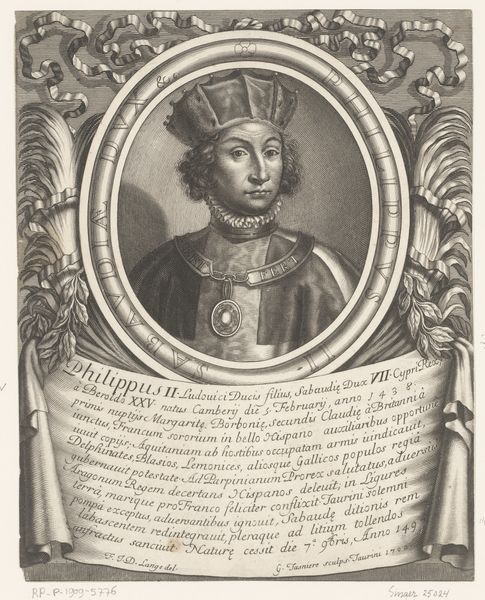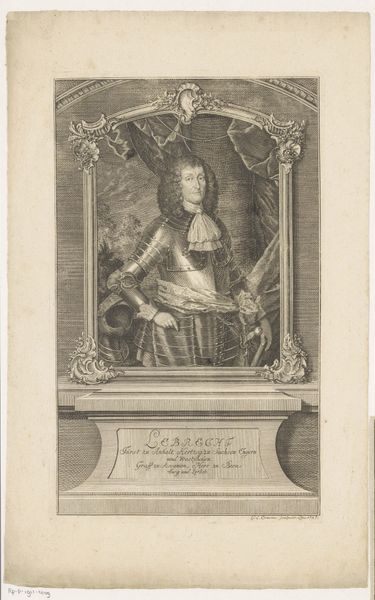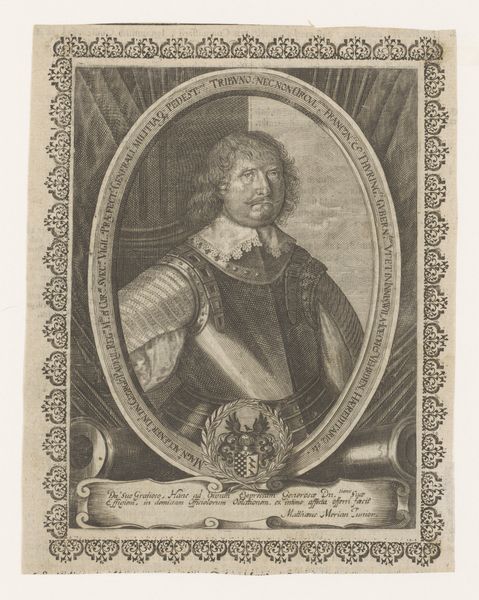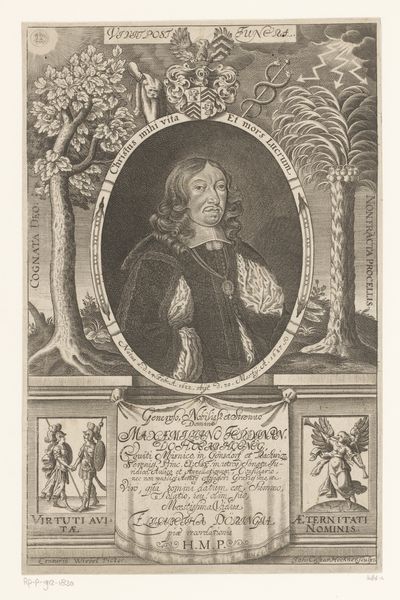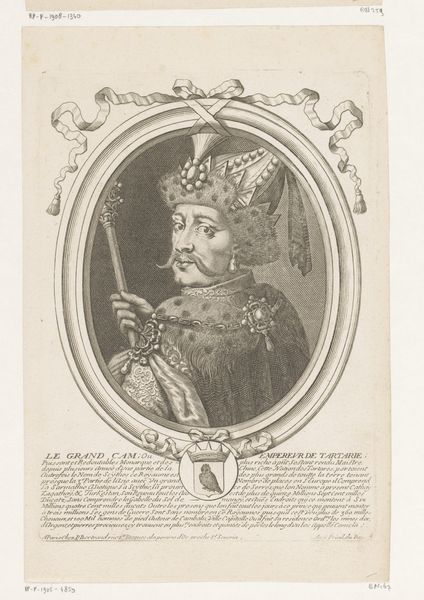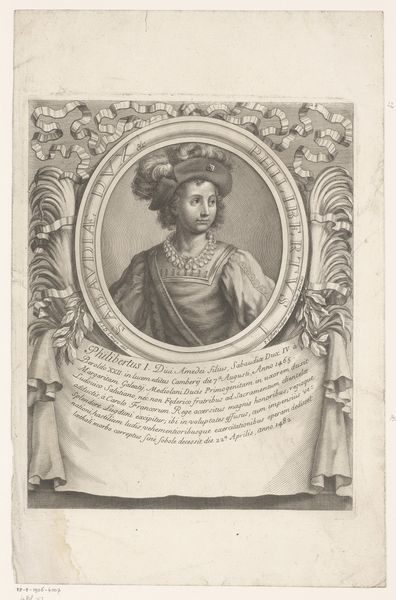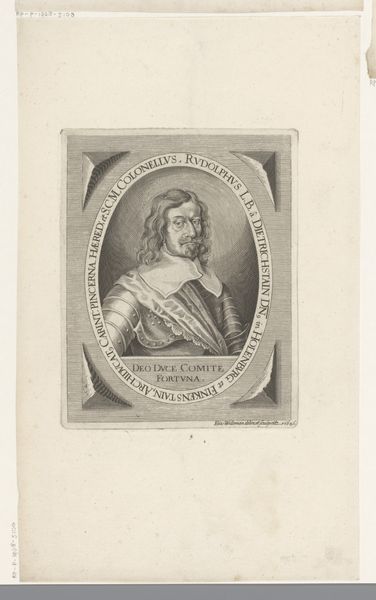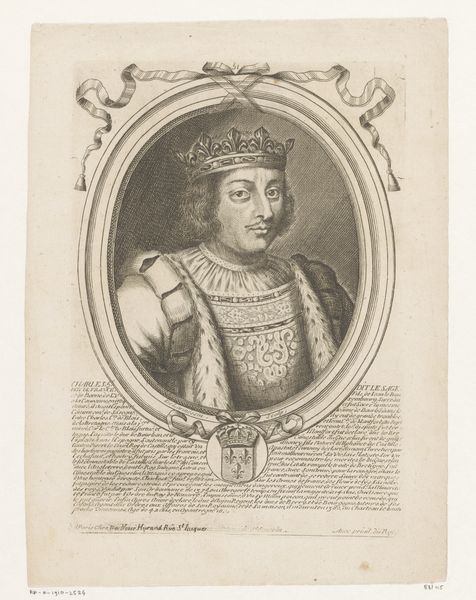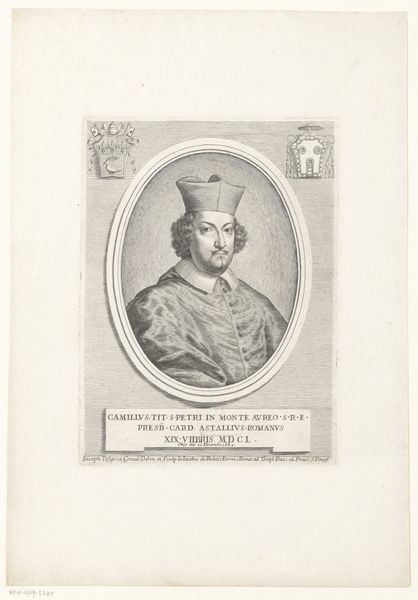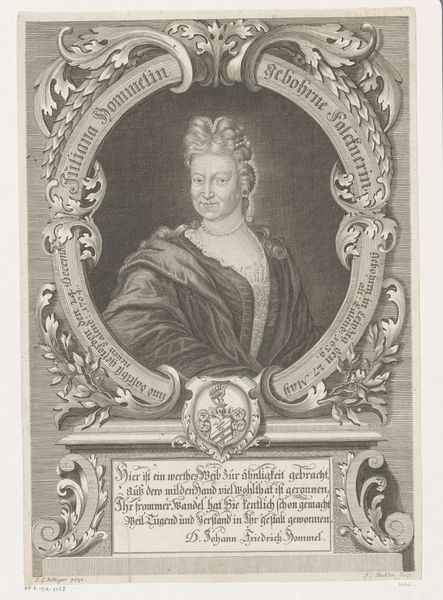
print, engraving
#
portrait
# print
#
old engraving style
#
11_renaissance
#
history-painting
#
engraving
Dimensions: height 280 mm, width 225 mm
Copyright: Rijks Museum: Open Domain
Georges Tasnière made this print of Filibert II sometime around the turn of the 18th century. It gives us an insight into the social function of portraiture at the time. Prints like these were less about the individual likeness, and more about conveying status, power, and dynastic lineage. Look at the symbols: the crown, the ermine robe, the elaborate frame. These are visual codes that communicate Filibert's noble rank. The Latin inscription below adds another layer, listing his titles and achievements, situating him within a historical narrative of power. Tasnière was working in a period when printmaking was becoming increasingly important for disseminating images and information. Portraits like this circulated among a specific elite audience, reinforcing social hierarchies. As historians, we need to consider the context in which this print was made and consumed, looking at sources like letters, inventories, and other visual materials to understand its role in the cultural landscape of the time.
Comments
No comments
Be the first to comment and join the conversation on the ultimate creative platform.

